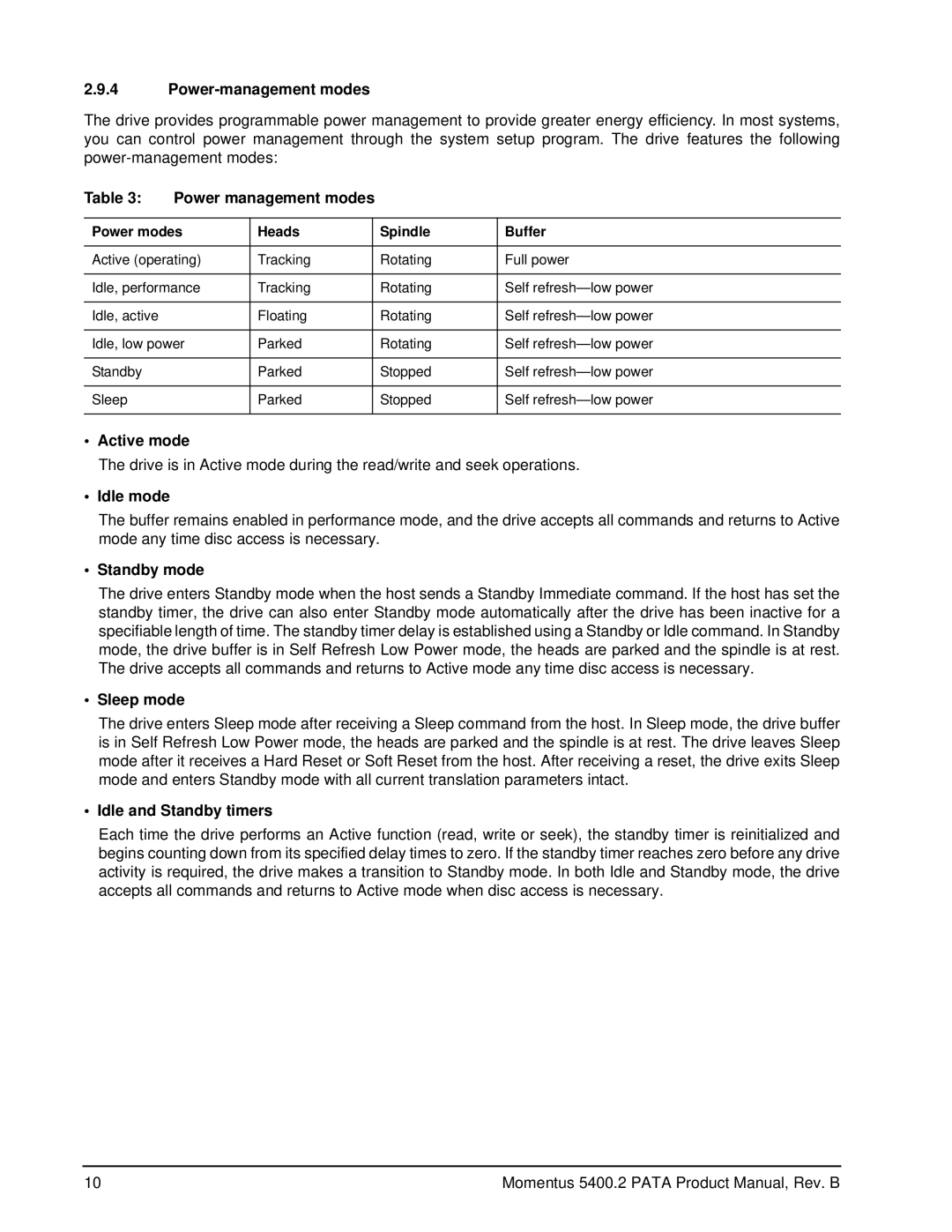ST9120821A, ST98823A, ST94813A, ST9100824A, ST93811A specifications
The Seagate ST96812A, ST93811A, ST9100824A, ST94813A, and ST98823A are notable hard drive models from Seagate’s extensive lineup, each offering distinct features and technologies suitable for various computing needs. Designed predominantly for desktop and enterprise solutions, these drives showcase Seagate's commitment to performance, reliability, and innovative technology.Starting with the ST96812A, this drive features a storage capacity of 120 GB and utilizes an ATA interface, making it a popular choice during its time for both personal computing and enterprise applications. It is engineered with a 5400 RPM spindle speed, providing a balance between performance and power efficiency. With its 2 MB cache, the ST96812A enables quick access to frequently used data, facilitating smooth operation for everyday tasks.
The ST93811A, with a capacity of 80 GB, builds on the principles of dependable storage. It also operates at 5400 RPM, ensuring consistent performance for users who rely on dependable access to their stored information. The model’s robust design includes a 2 MB buffer, enhancing data transfer speeds and improving overall system responsiveness.
Next, the ST9100824A offers a significant leap in performance with a 100 GB capacity and superior data management capabilities. This drive integrates features like Advanced Format technology, which optimizes sector size for increased storage efficiency and error correction. The spindle speed retains 7200 RPM, providing faster read and write speeds which cater well to intensive applications such as gaming or video editing.
With a focus on higher storage capacity, the ST94813A holds up to 160 GB. This model is particularly notable for its low power consumption and quiet operation, making it suitable for environments where noise reduction is crucial, such as audio production studios or home media centers. The 7200 RPM speed and enhanced cache improve overall performance for multitasking scenarios.
Lastly, the ST98823A’s 250 GB capacity positions it as a higher-end option within this series. Featuring a spindle speed of 7200 RPM and a considerable cache size, it excels in handling larger files and complex applications. This model is geared towards users seeking a fusion of speed and ample storage for applications ranging from database management to creative production.
In summary, the Seagate ST96812A, ST93811A, ST9100824A, ST94813A, and ST98823A hard drives collectively illustrate Seagate's dedication to providing various storage solutions characterized by performance, efficiency, and technological advancement tailored to meet diverse user demands.
